Dien Bien, located 420 kilometers northwest of Hanoi, plays an important role in national defense. This province is bordered to the northwest by China and to the west by Laos. It is divided into eight districts: Dien Bien, Dien Bien Dong, Muong Cha, Muong Nhe, Tua Chua, Tuan Giao, Muong Ang, and Nam Po. Dien Bien Phu is the province’s capital, and it is well-known for its victory over French colonists on May 7, 1954.
General Information
The place is 18 kilometers long and 4 kilometers wide, located in Muong Thanh alleys and surrounded by pristine forests, imposing mountains, and spectacular springs. It has a population of over 500,000 people. This province is notable for its large number of ethnic minorities, the majority of whom are Thai and H’Mong. When you visit Dien Bien, you will have the opportunity to learn about the ethnic culture and sample their delectable cuisine.
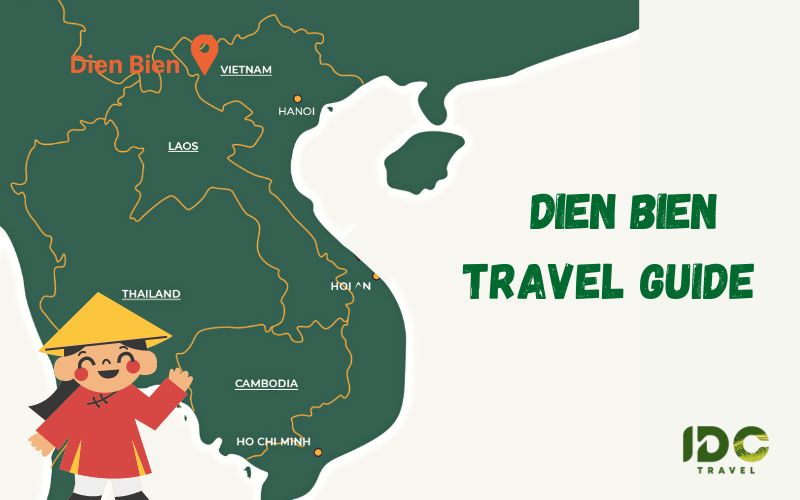
Dien Bien location – travel guide
Dien Bien is one of Vietnam’s most ancient areas, with many ancient relics discovered here. This province, inhabited by Tay and Thai ethnic groups, was the capital of the Lu Kingdom in Muong Thanh Valley in the early 9th century. The Lu Kingdom then weakened, and Muong Thanh fell under Thai control in the 15th century.
The Battle of Dien Bien Phu
Dien Bien Phu was a decisive battle between French colonists and Viet Minh communists and nationalists. It happened between March and May 1954, when the French enemy occupied Dien Bien Phu in order to cut off our supplies from Laos and keep a base against the Viet Minh. Our army, led by General Vo Nguyen Giap, surrounded 400,000 French troops and used heavy artillery to disable the French counter-artillery fire. The Indochina War ended as a result of our victory, and an official settlement known as the Geneva Agreement was signed in 1954.
Ethnic Minorities in Dien Bien
Because the province is home to 21 ethnic groups, it is an ideal location for an eco-tour in Vietnam. Thai people account for 38% of the population in Dien Bien, followed by H’Mong (30%) and Kinh (30%). Traditional customs, festivals, and local specialties have been well preserved, and visitors can learn about the colorful ethnic life that exists here.
Dien Bien Weather & Best Time to Visit
This province has a mountainous tropical climate. Dien Bien, like other provinces in Northern Vietnam, has four distinct seasons. The average temperature here is 22 degrees Celsius, with winter temperatures dropping to 0 degrees Celsius. Heavy rains have been recorded in June, July, and August, making it unwise to visit Dien Bien during these months.
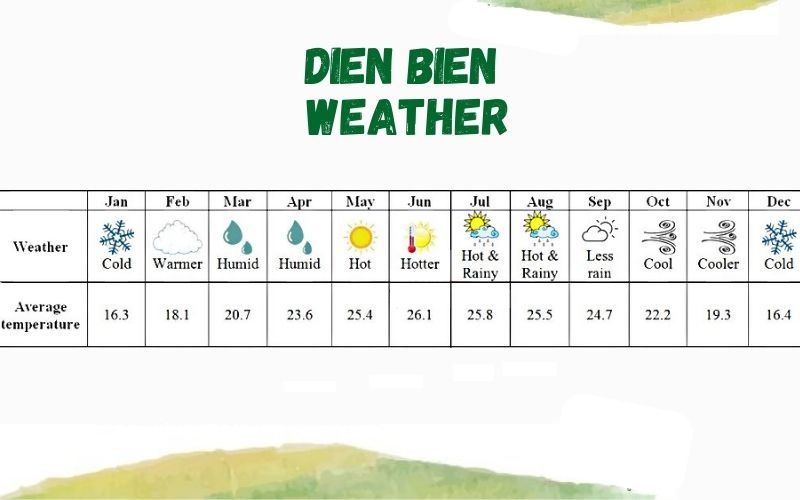
Dien Bien Weather & Best Time to Visit
Dien Bien is best visited between September and November. During your trip to Northern Vietnam, you can combine it with other destinations.
Getting to Dien Bien
By plane
Dien Bien Phu Airport is located 1km north of the city, toward Lai Chau. Tickets can be purchased on the Vietnam Airlines website. The flight from Hanoi to Dien Bien takes 1 hour and 15 minutes.
By bus/car
Dien Bien Bus Station is located on Thanh Binh Street in Dien Bien Phu, Dien Bien Province.
- From Hanoi: 460km. Duration: 10 hours 40 minutes
- From Son La: 152km. Duration: 3 hours 40 minutes
- From Lai Chau: 205km. Duration: 5 hours 15 minutes
- From Sapa: 275km. Duration: 7 hours
- From Lao Cai: 306km. Duration: 8 hours
- From Mai Chau: 339km. Duration: 8 hours 10 minutes
- From Laos: Tay Trang border – 40km. Duration: 1 hour 15 minutes
If you want to rent a private car in Vietnam, you can do so through a travel agency. We highly recommend it because you can travel faster and stop anywhere you want.
Getting around Dien Bien
On foot
Dien Bien Phu is a small capital that can be walked around in 1-2 days. Trekking tours are available in the province’s ethnic villages.
By taxi
Some taxi companies in the province include:
- Taxi Hoa Ban: 0215.3.89.89.89
- Taxi Him Lam: 0215.3.72.72.72
- Taxi Xuan Long: 0215.3.76.76.76
Where to Stay in Dien Bien
In comparison to other well-known tourist destinations, there aren’t many luxurious hotels and resorts here. We recommend the following places in Dien Bien Phu for your visit:
- Muong Thanh (4-star)
Address: No. 514, 7th May Street
- Him Lam Hotel (3-star)
Address: Area 6, Him Lam Ward
- A1 Hotel Dien Bien Phu (3-star)
Address: 3 Hoang Cong Chat Street
What to See in Dien Bien
Dien Bien Phu is not a particularly popular tourist destination. This province, which is far from Hanoi and difficult to reach, is famous for housing relics from the Battle of Dien Bien Phu, which ended the Indochina War on May 7, 1954. These are the highlights of your trip.
Museum of Dien Bien Phu Victory
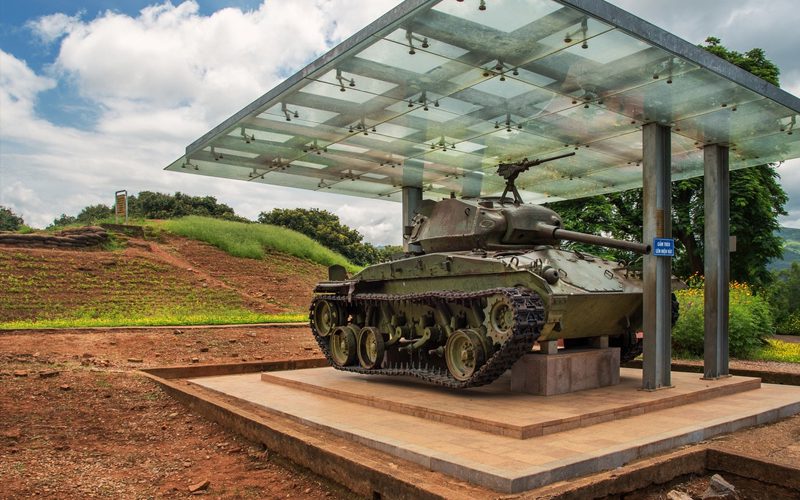
Tank in Museum of Dien Bien Phu Victory
The Dien Bien Phu Victory Museum was built in 1984 in front of the A1 Hill and Cemetery. The museum was renovated in 2003 and reopened in May 2014 to commemorate the Battle of Dien Bien Phu’s 60th anniversary. The museum has four major themes: the French colonialism resistance war from 1945 to 1954, international support for the Battle, the stages of the battle, and the global impact of Dien Bien Phu Victory.
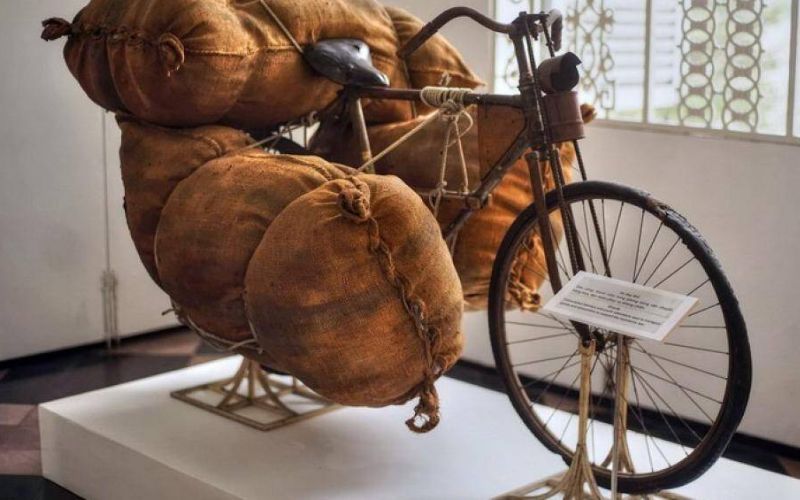
The legend bicycle in the battle
This museum displays 1000 objects, including many interesting items such as General de Castries’ iron bathtub, a transporter’s bike that can carry up to 320 kg, and numerous photographs and documents.
- Location: Street 3, Muong Thanh Ward
- Opening hours: 7:30 am – 11:00 am & 1:30 pm – 5:00 pm
Dien Bien Phu Historical Site
If you are on a discovery tour in Vietnam and want to learn about our victorious battle, spend some time exploring some of the remnants here.
- Location: On the 200km-long valley of Dien Bien Phu
- Opening hours: 7:00 am – 11:00 am & 1:30 pm – 5:00 pm
1. A1 Hill
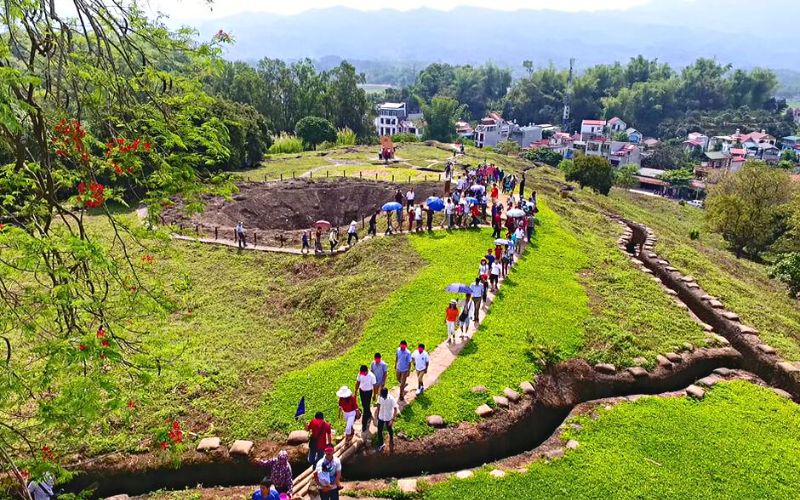
A1 Hill
The fiercest fighting between the Viet Minh and the French army occurred on A1 Hill. It is known as ‘Eliane’ in French and A1 Hill to the Vietnamese. 2516 Vietnamese soldiers gave their lives for our country’s independence for 36 days. We won the battle on May 7, 1954, thanks to their dedication.
2. Dien Bien Phu Cemetery
When visiting the A1 Hill and Doc Lap Hill cemeteries, you can take your time paying your respects to our martyrs. There are 644 graves on A1 Hill and 2,432 graves on Doc Lap Hill. Vinh Dien, Be Van Dan, Phan Dinh Giot, and Tran Can are some of the country’s most famous heroes.
3. The bunker of the French General de Castries
It is located in the Muong Phang Commune, in the heart of the camp. It was 8 meters long and 20 meters wide, and it had four rooms: three were offices for the general and his officers, and the fourth was for radio transmission.
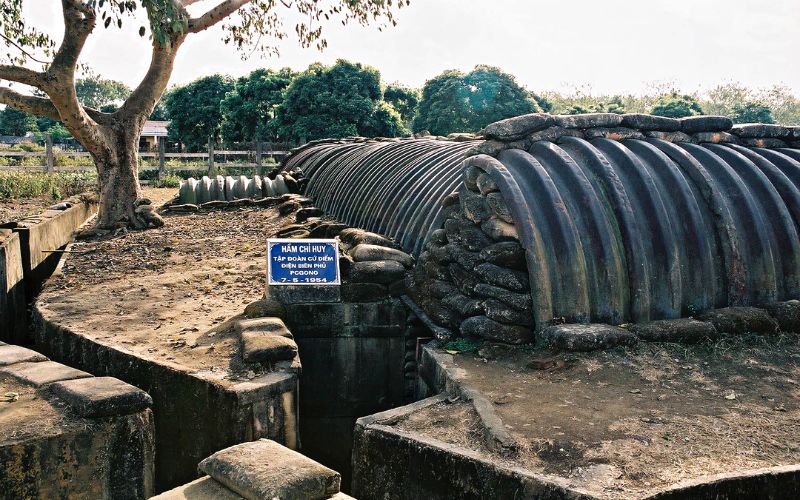
The bunker of the French General de Castries
General De Castries met with high-ranking officers and political figures such as French Prime Minister Joseph Laniel, American President Dwight Eisenhower, English Prime Minister Winston Churchill, and other journalists at this location.
4. The Command Post of Vietnamese soldiers
The command post is in Muong Phang Commune, 30 kilometers from Dien Bien Phu. It was here that our General Vo Nguyen Giap and his officers worked and completed their battle mission.
5. Him Lam Hill
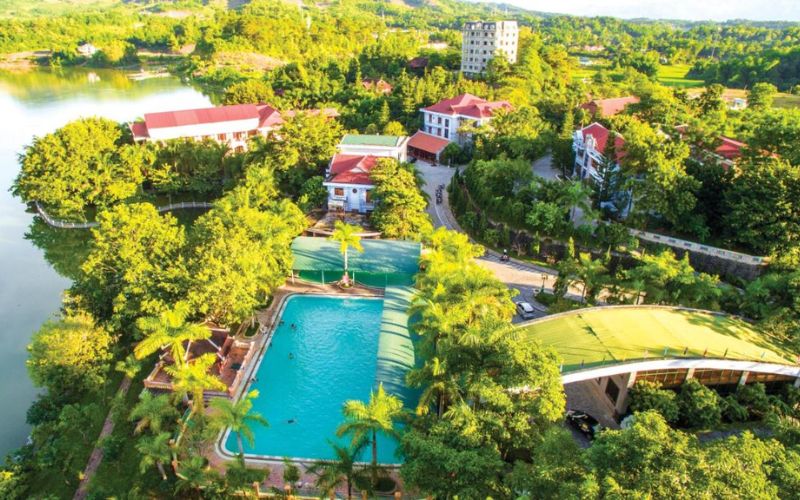
Him Lam Hill
This is one of three camps that were defeated at the start of the campaign on March 13th, 1954, 17 kilometers east of Dien Bien Phu.
6. C, D, and E Hills
These hills have been preserved. They used to serve as strongholds to protect the headquarters of the French army. The new Dien Bien Phu Victory Statue can be found at the top of D1 Hill.
Pa Khoang Lake
Pa Khoang Lake is a romantic place for a boat ride, dotted with steep hills, green mountains, and small houses. It is most beautiful in the spring when all of the scenery is shrouded in mist. The peaceful and atmospheric scenery will stay with visitors forever.
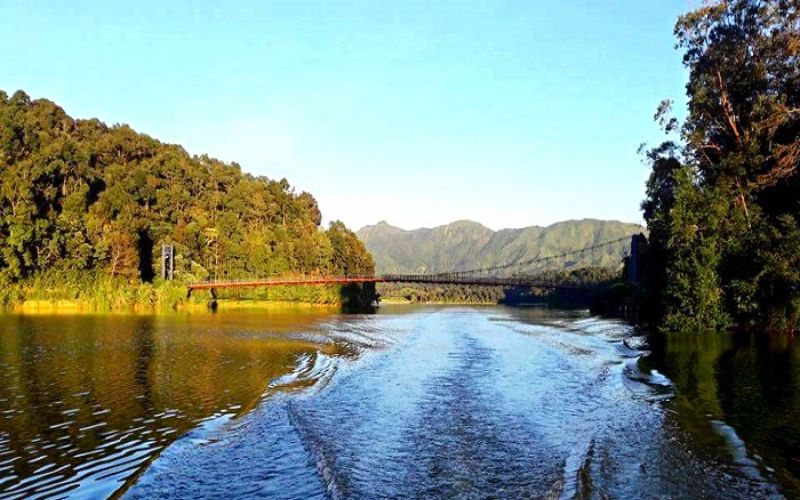
Pa Khoang Lake
On the lake’s banks, you can learn about Thai and Kho Mu ethnic people’s daily lives and customs.
Muong Thanh Valley
Muong Thanh Valley, along with Muong Lo Valley in Yen Bai Province, Muong Than Valley in Lai Chau Province, and Muong Tac Valley in Son La Province, is one of Vietnam’s largest valleys. This valley, surrounded by the Pu Hong Meo and Pu Hong Thai mountains, is a spectacular location for admiring emerald rice fields and trekking along breathtaking trails. The Muong Thanh Old Bridge is a must-see attraction in this area. The bridge, which crossed the Nam Rom River, symbolized the demise of the French colonists in Vietnam.
Ban Phu Citadel
Ban Phu Citadel, located in Noong Het village, was built in the 15th century. Phe army from China invaded the citadel in the 18th century. The army was then led by Hoang Cong Chat to liberate the Muong Thanh region. Today, the citadel has been restored so that visitors can see the image of the ancient wall.
Hoang Cong Chat Temple
This temple honors the hero Hoang Cong Chat, who was born in Thai Binh. In 1754, he led the national army against Phe’s enemy to liberate the province. Nowadays, to express gratitude for his contributions, the locals hold a festival with a formal ceremony on the 24th and 25th days of the second lunar month.
Pha Din Pass
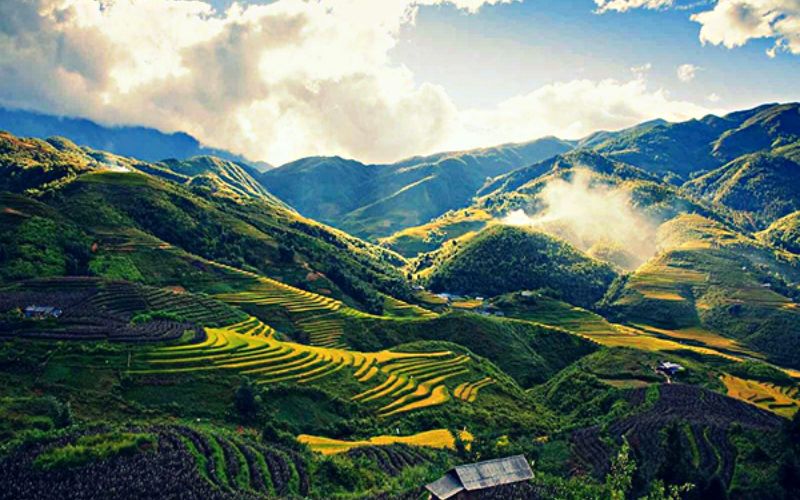
Pha Din Pass
Pha Din Pass has a rugged terrain with twists and turns at an elevation of 1648 meters above sea level. This zigzag pass with eight winding turns is ideal for daring travelers looking to take on a challenge. You can take in the natural beauty of one of Northwestern Vietnam’s most beautiful provinces from the pass.
Pa Thom Cave
Pa Thom Cave, located in the province’s west, has an amazing formation of stalactites and stalagmites. The cave is spacious and resembles a rock palace, measuring 12 meters high, 17 meters wide, and 350 meters long. Pa Thom is a romantic and miraculous attraction for your trip to the province because of the silver waterfall inside the cave.
What to Eat in Dien Bien
The best places to eat in Dien Bien are in Muong Thanh Ward’s center, along the 7th May road. You can walk around and find a place to eat, but if you don’t want to walk, don’t rely on taxis or motorcycle taxis, which are scarce here. We recommend that you dine at your hotel.
Com lam (Nep nuong rice)
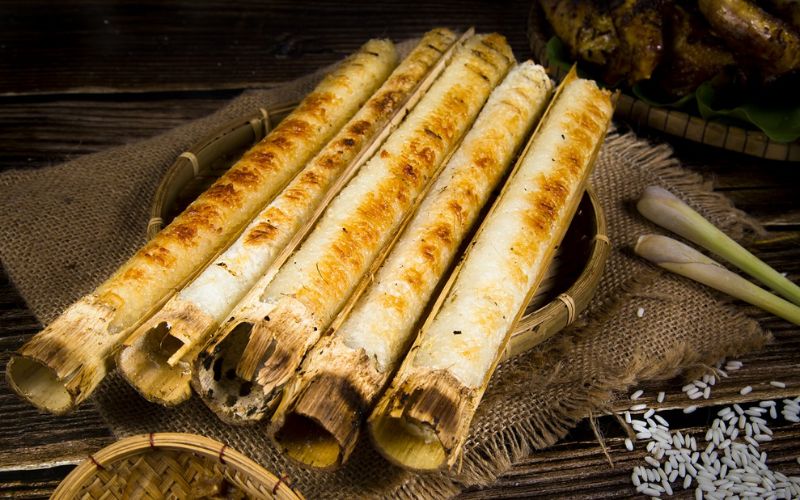
Com lam
This is a must-try dish when visiting this location. Nep nuong rice, grown on stepped paddy fields, is special rice in this place due to its favorable climate and canal system that ensures a consistent water supply. The rice is sweeter, softer, and more aromatic than other types of rice. Nep nuong rice is used by the locals to make tasty dishes such as sticky rice (xoi), rice round cake (banh day), and steamed sticky rice in bamboo tubes (com lam).
Banh Day (sticky rice cake)
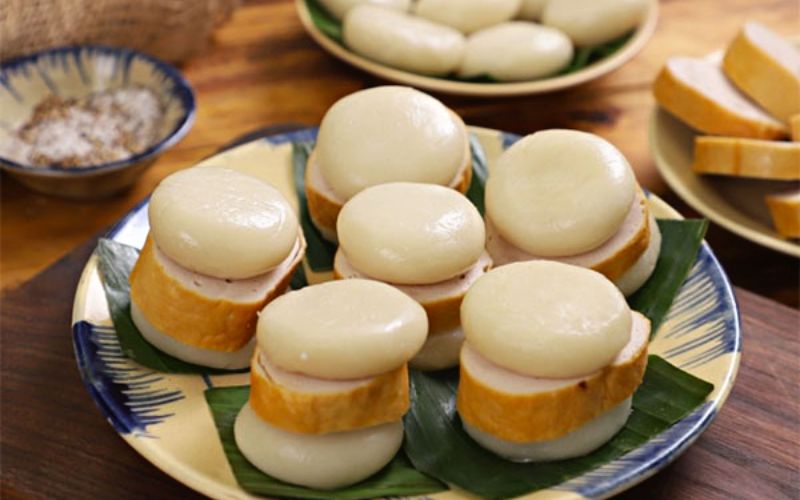
Banh day
You can try this cake in Hanoi or other provinces of Vietnam, but there is no special Banh day like here. Banh day is made from Nep nuong rice, which is cooked by H’Mong ethnic people using a secret recipe passed down from generation to generation. This dish is best served with gio (Vietnamese ham/sausage).
Dried buffalo meat
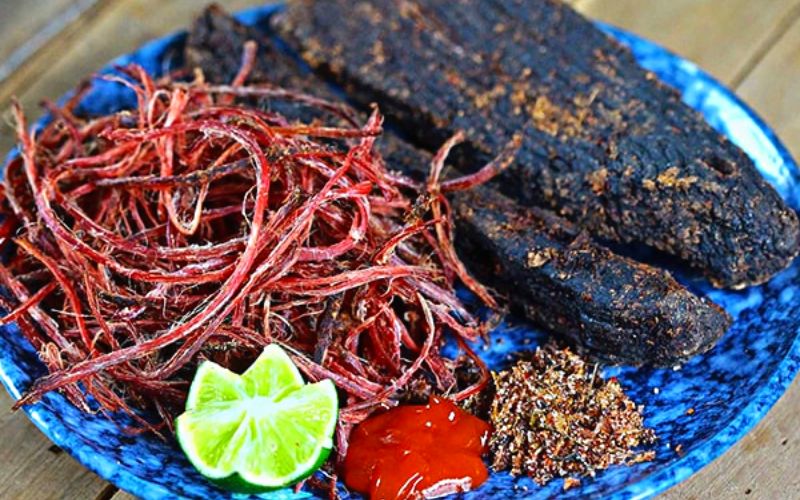
Smoked dried buffalo meat
This is a dish that everyone who visits Dien Bien should try because it has a unique flavor that no other place can match. Traditionally, this special dish was only prepared on New Year’s Eve or during a large religious ceremony. However, as tourism has grown, this dish has become more popular, and visitors can enjoy it while visiting this land.
We hope the information in the article will be helpful to you. If you want to have more information and ideas to build an unforgettable itinerary, do not hesitate to contact us!
